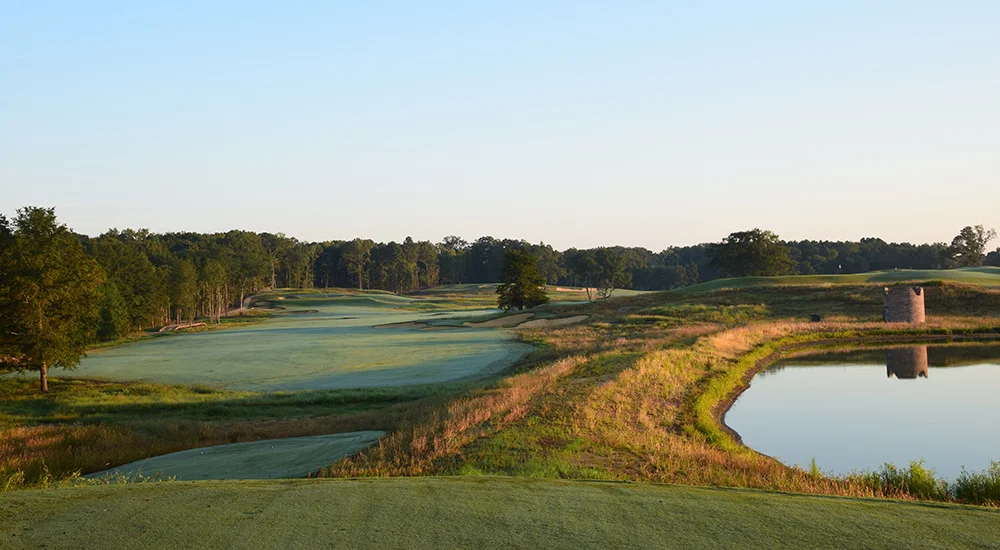Mossy Oak Golf Course may be the new kid on the block, opening across Waverly Road in West Point just last year. But the idea behind what Golf Digest has rated as the third best new golf course in 2017, has been rattling around in George Bryan’s head since the turn of the century.
Bryan, who put together a group of 30 investors to open up Old Waverly Golf Course in 1988, said he always felt a second course would be needed to achieve his original dream for the property.
“There’s a saying in golf that one plus one equals three,” Bryan said. “When you add a second course, it more than doubles your ability to bring in what we call destination golfers. That has been part of our plan all along. We had been working on it for six or eight years, but then the recession hit.
“But now, after 25 years at Old Waverly, we sensed that we either needed to build another course or do something to open up more avenues for golfers to come here.”

The idea is to attract golfers to stay and play at the courses. Mossy Oak has five spacious cottages, each equipped to sleep eight on the property. Bryan said its success will also provide a boost to hotels in the area, as well as restaurants. A clubhouse is set to be built this year.
Bryan assembled a group of 82 investor/founders, including Toxey Haas, founder of Mossy Oak, to make that second course a reality.

“It’s been a great collaboration,” said Bryan, who noted the course benefits from the branding reputation that Mossy Oak brings to the table.
When Bryan and his partners built Old Waverly, which opened in 1988 and has been a staple of Golf Week’s Top 100 courses and Golf Digest’s Top Course in Mississippi for multiple years, the idea of building a world-class golf course in an area far removed from a major population center was considered a gamble.
“People questioned my sanity, mainly people in my family,” Bryan says. “And there were times I did too.”
The success of Old Waverly earned the credentials among investors to expand on his dream. After acquiring the 175 acres for the course in 2013, the next challenge was deciding what kind of course to build.
Although separated by just a few hundred feet, Old Waverly and Mossy Oak could not be more different, and on many levels.
First, Old Waverly operates as a private club with a residential community built around it.
Mossy Oak is a public course and aside from five cottages, there are no residences.
But the most striking difference is in the nature of the courses themselves.
Old Waverly is a traditional layout built on land heavily transformed to fit the idea of its architects, Bob Cupp and Jerry Pate.
By contrast, Mossy Oak is a links style course, patterned after the old Scottish courses that Bryan always loved. Rather than making massive changes to the topography, architect Gil Hanse used the land more or less as it was, crafting the course around a natural rolling landscape of what once was a dairy farm.
“We call it nature’s golf,” said Bryan. “It’s very much a minimalist approach to course design.”
Bryan said the arrival of Mossy Oak gives players two different golf experiences, something that destination golfers demand.

“We see ourselves as a regional golf destination, drawing golfers from about a 300-mile radius,” Bryan said. “But if you are going to really do that, you need more than one course. You need variety, which is what the two courses provide. They complement each other.”
Chris Jeter, Director of Golf at Mossy Oak, said the response to the course has been positive.
“We’ve had about 8,000 rounds (played) since we opened in September,” Jeter said. “The feedback we’ve had is that they really enjoy the course. It’s a different style of golf than a lot of people have experienced. As a golfer, you’re always looking for that new experience, so the response has been very good.”
Bryan said he is working with a company in Atlanta to promote the course as a destination throughout the south.
“We’re getting a good response from people in Tennessee, Georgia and Alabama,” Bryan said. “We’d like to build on that and that’s what we’re working on right now.”

